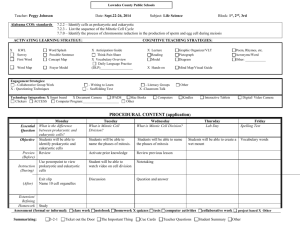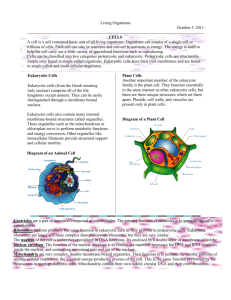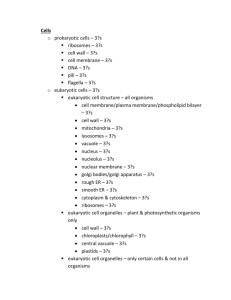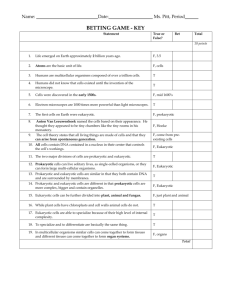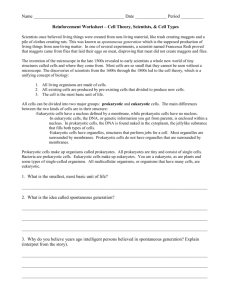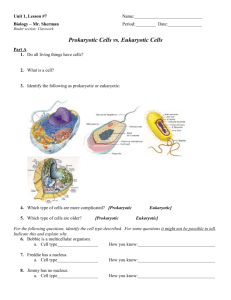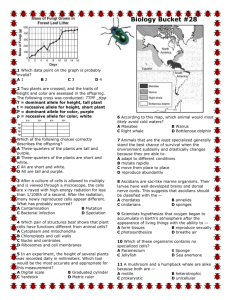Cell UBD - ACDSCurriculum
advertisement
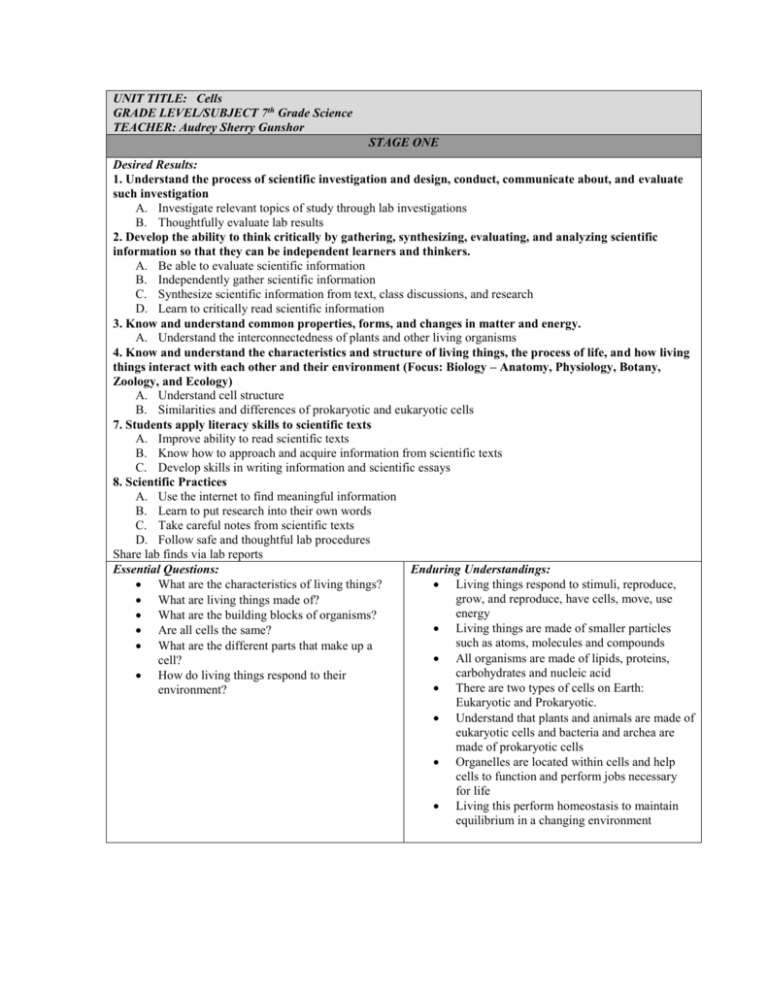
UNIT TITLE: Cells GRADE LEVEL/SUBJECT 7th Grade Science TEACHER: Audrey Sherry Gunshor STAGE ONE Desired Results: 1. Understand the process of scientific investigation and design, conduct, communicate about, and evaluate such investigation A. Investigate relevant topics of study through lab investigations B. Thoughtfully evaluate lab results 2. Develop the ability to think critically by gathering, synthesizing, evaluating, and analyzing scientific information so that they can be independent learners and thinkers. A. Be able to evaluate scientific information B. Independently gather scientific information C. Synthesize scientific information from text, class discussions, and research D. Learn to critically read scientific information 3. Know and understand common properties, forms, and changes in matter and energy. A. Understand the interconnectedness of plants and other living organisms 4. Know and understand the characteristics and structure of living things, the process of life, and how living things interact with each other and their environment (Focus: Biology – Anatomy, Physiology, Botany, Zoology, and Ecology) A. Understand cell structure B. Similarities and differences of prokaryotic and eukaryotic cells 7. Students apply literacy skills to scientific texts A. Improve ability to read scientific texts B. Know how to approach and acquire information from scientific texts C. Develop skills in writing information and scientific essays 8. Scientific Practices A. Use the internet to find meaningful information B. Learn to put research into their own words C. Take careful notes from scientific texts D. Follow safe and thoughtful lab procedures Share lab finds via lab reports Essential Questions: Enduring Understandings: What are the characteristics of living things? Living things respond to stimuli, reproduce, grow, and reproduce, have cells, move, use What are living things made of? energy What are the building blocks of organisms? Living things are made of smaller particles Are all cells the same? such as atoms, molecules and compounds What are the different parts that make up a All organisms are made of lipids, proteins, cell? carbohydrates and nucleic acid How do living things respond to their There are two types of cells on Earth: environment? Eukaryotic and Prokaryotic. Understand that plants and animals are made of eukaryotic cells and bacteria and archea are made of prokaryotic cells Organelles are located within cells and help cells to function and perform jobs necessary for life Living this perform homeostasis to maintain equilibrium in a changing environment Knowledge: Skills: All living things are made of at least one cell Label the main parts of both eukaryotic and prokaryotic cells In organisms with eukaryotic cells, cells can be specialized allowing the organism to be more Create a 3D model of a cell complex Give and specific scenario identify what time of All cells have DNA cells is likely to live in an environment ex: hot spring Cells have organelles Living things use energy Cells are made of small units: atoms, compounds, molecules Similarities and differences of eukaryotic and prokaryotic cells Archea can love in harsh environments Organisms respond to their environment in order to survive STAGE TWO Performance Assessments: Lab activities and reports Cell City Project Open note assessments Pop quizzes: labeling a cell and its parts, identifying prokaryotic and eukaryotic cells Written reflections and summaries based on class conversations and discussion Other Assessments: Class participation One – on – one conversations Questions asked Notes taken in class and at home Group participation in Cell City brainstorming and creation STAGE THREE Materials: Science Fusion: Cells and Heredity Holt Rinehart and Winston: Cells and Heredity Various National Geographic Articles Internet resources



